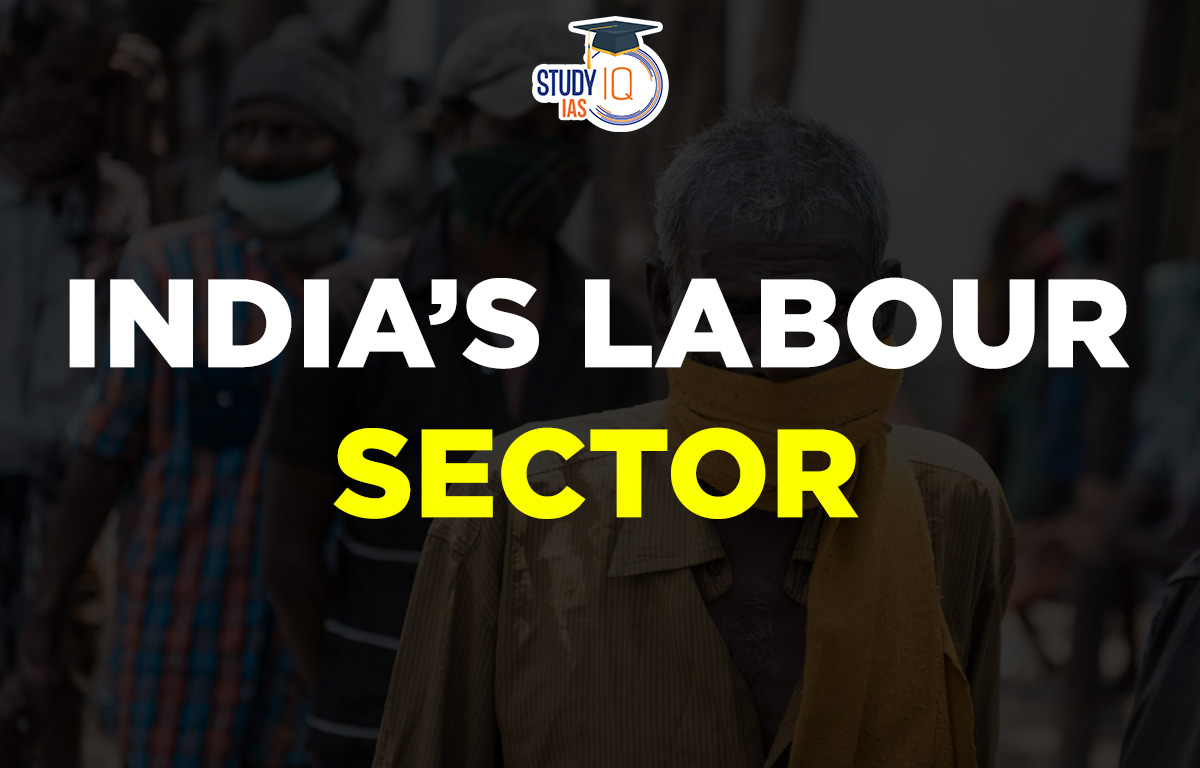Table of Contents
Context: The recent moves by the governments of Karnataka and Tamil Nadu to increase the number of working hours per day are concerning as they undermine labor rights and set the clock back to the 19th century in the name of ease of doing business.
More on the News
- The Factories (Karnataka Amendment) Bill, 2023: The Karnataka legislature has passed an amendment to the Factories Act of 1948 in its application in the state.
- The bill allows industries to extend working hours for labour up to 12 hours a day while keeping the maximum weekly work hours at 48.
- It also allows overtime to extend from 75 hours in three months to 145 hours and also allows women to work night shifts with adequate security.
- The Karnataka government said that it was being done to provide a boost for the manufacturing sector where India is lagging behind China.
- Tamil Nadu’s Factories (Amendment) Act 2023: It empowers the state government to exempt any factory or group or group of factories from any or all of the provisions of the Factories Act, 1948, which entail rules related to working hour limits.
- Workers can now choose to work for 12-hour daily shifts and they will be entitled to four-day work week, with three days off.
About May Day
- May Day, also known as International Workers’ Day, is celebrated on May 1st each year.
- It is a day to honor the contributions of workers and laborers and to promote the rights and interests of the working class.
- May Day is celebrated in honor of the international labor movement and the Haymarket Square affair, which occurred in Chicago, USA, in 1886.
Labour Force in India
- Labour in India refers to employment in the economy of India.
- According to World Bank data, in 2020, there were around 501 million workers in India, the second largest after China.
- Out of which, agriculture consists of 41.19%, industry sector consists of 26.18% and service sector consists of 32.33% of total labour force.
- Categorization: Labour force in India can be divided into organized and unorganized sectors.
- The organized sector or formal sector consists of workers who are employed by establishments that are registered under various labor laws and regulations, have defined working hours, and receive benefits such as health insurance, pension, and other social security benefits.
- The unorganized sector or informal sector consists of workers who are self-employed or casual workers and do not have job security, regular income, or access to social security benefits.
Some of the issues Plaguing India’s Labour Sector
- Skewed Labour Force Participation Rate (LFPR): According to CMIE data, as of December 2021, the male LFPR was 67.4%, while the female LFPR was as low as 9.4%.
- Unorganized sector: The majority of India’s labor force is employed in the informal sector, with around 90% of workers engaged in informal employment, according to the International Labour Organization (ILO).
- Lack of social security: According to the Periodic Labour Force Survey Report (2018-19), 70% of regular wage or salaried employees in the non-agricultural sector have no formal contract, and 52% have no social security benefit.
- Gender pay gap: The gender pay gap in India is among the widest in the world. Indian women earned, on an average, 48% less compared to their male counterparts.
Governing Framework for Labour in India
- Constitutional Framework: Under the Constitution of India, Labour as a subject is in the Concurrent List and, therefore, both the Central and the State governments are competent to enact legislations subject to certain matters being reserved for the Centre.
- Judicial Interpretation: In the case of Randhir Singh vs Union of India, the Supreme Court stated that “Even though the principle of ‘Equal pay for Equal work’ is not defined in the Constitution of India, it is a goal which is to be achieved through Article 14,16 and 39 (c) of the Constitution of India.
- Article 14: It provides for equality before the law or equal protection of the laws within the territory of India.
- Article 16: It talks about the right of equal opportunity in the matters of public employment.
- Article 39(c): It specifies that the economic system should not result in the concentration of wealth and means of production to the detriment of the entire society.
- Legislative Framework: There have been several legislative and administrative initiatives taken by the government to improve working conditions and simplify labour laws.
- Most recent is the consolidated sets of 4 labour codes (Code of Wages, 2019; Industrial Relations Code, 2020; Social Security Code, 2020; Occupational Safety, Health and Working Conditions Code, 2020) which are yet to be implemented.
- The codes are based on recommendations of the Second National Commission on Labour (2002).
- The implementation process is delayed as states are yet to finalise their rules under these codes.
| Code on Wages, 2019 | Applying to all the employees in organized as well as unorganized sectors.
Under these new codes, a number of aspects related to employment and work culture, in general, might change including the take-home salary of employees, working hours, and the number of weekdays. According to this wage code, once an employee quits, is fired, or is removed from employment and services, a company is required to pay the full and final settlement of their salaries within two days after their last working day. Currently, firms require anywhere from 15 to 60 days, and in some situations up to 90 days, to pay the full settlement of wages. |
| Code on Industrial Relations, 2020 | Employees in India may be able to enjoy a four-day workweek, as opposed to the current five-day workweek.
In that case, however, employees will have to work for 12 hours on those four days since the labour ministry has made it clear that even if the proposal comes through, the 48-hour weekly work requirement has to be met. |
| Code on Social Security, 2020 | The regulations restrict allowances to 50 percent. This implies that half of the salary would be basic wages and contribution to the provident fund is calculated as a percentage of basic wages that involves the basic pay and dearness allowance (DA).
Under the current labour regulations, the employer’s percentage-based contribution towards the PF balance depends on the employee’s basic pay and dearness allowance. |
| The Occupational Safety, Health and Working Conditions Code, 2020 | Bill provides that women will be entitled to be employed in all establishments for all types of work under the Bill.
It also provides that in case they are required to work in hazardous or dangerous operations, the government may require the employer to provide adequate safeguards prior to their employment. |
Concerns associated with the New Labour Laws
- Concerns with the Code on Wages, 2019:
- Binding Floor Wage vs. Minimum Wage Rate: State governments are not allowed to set minimum wages below the floor price, but this creates a dual wage rate system as all states set their minimum wages above the floor wage. A binding minimum wage rate should be established to eliminate the dual wage rate.
- Dispute Resolution: Section 45 of the Code designates Gazetted Officers to hear and decide disputes, even though they may not have legal knowledge, potentially leading to unjust decisions.
- Exemptions from Criminal Penalties: Section 56 of the Code exempts employers from criminal penalties if they can demonstrate due diligence in enforcing the Code and the violation was committed by someone else without their knowledge, permission, or connivance. This creates a potential loophole for employers to avoid criminal liability for violations of the Code.Bottom of Form
- Concerns with the Code on Social Security, 2020
- Limited Coverage of Workers: The Code only covers employees of enterprises with a minimum number of employees, leaving out unorganized sector workers with fewer than ten employees and self-employed workers, who are left to be covered by other discretionary programmes.
- Exclusion of Workers from Additional Benefits: Only employees who earn more than a certain amount, determined by the government, are eligible for additional benefits, such as provident funds, pension benefits, and medical insurance benefits, leaving the rest of the staff without any additional benefits.
- No Improvement in Delivery of Social Security Benefits: The administration of social security schemes remains fragmented, with different schemes being overseen by different boards and corporations, potentially leading to inefficiencies and disparities in the delivery of benefits.
- Concerns with the Occupational Safety, Health and Working Conditions Code, 2020
- Selective Coverage: The Code only addresses the working conditions of select specialists, which may lead to discrimination against other employees who are not covered by such provisions.
- Exemption for Charitable and Non-Profit Organisations: The Code does not apply to charitable or non-profit organisations, which may leave employees of such organisations without adequate protection and support for their occupational safety, health, and working conditions.
- Concerns with the Code on Industrial Relations, 2020
- Lack of Clarity: Some provisions of the code are vague and lack clarity, which may lead to confusion and disputes in their implementation.
- Dilution of Worker Protections: The code reduces the number of safety and welfare provisions for workers and dilutes their protections by allowing employers to self-certify compliance with safety and health standards.
- Weakened Trade Unions: The code undermines the role of trade unions by allowing the appointment of outsiders as safety officers, which could lead to a conflict of interest.
- Exclusion of Gig Workers: The code does not provide adequate protection to gig workers, who are a significant portion of the Indian workforce, by not defining their status as employees.
- Inadequate Penalties: The penalties for violations of the code are not stringent enough to act as a deterrent for employers who flout safety and health norms.
- Implementation Challenges: The code requires significant changes in the existing legal and regulatory framework, and its implementation would require adequate resources, infrastructure, and capacity building.


 Daily Quiz 16 July 2025
Daily Quiz 16 July 2025
 US Approach to the Trade Deal with India...
US Approach to the Trade Deal with India...





















